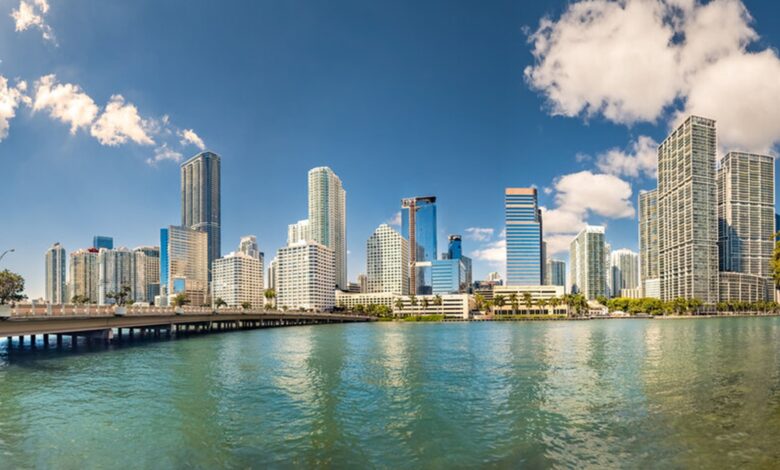Luxury, Legacy, and Local Impact: How Real Estate Developers Are Reshaping Coastal Cityscapes in 2026

Coastal cities have always lived at the intersection of aspiration and ambition. They are places where skylines compete with horizons, where every new project tries to solve an old challenge while preparing for a future no one can fully predict. And heading into 2026, the work of real estate developers is becoming far more than the creation of buildings – they are recalibrating entire city identities.
What’s fascinating is how the shift is happening and how organically it’s moving forward through a perfect strategic approach. Dive into New York’s waterfront or Miami’s rapidly evolving districts, and you’ll notice a distinct pattern: precision in design, purpose in execution, and an acute understanding that urban spaces now carry social, economic, and environmental weight. The result is development that feels less transactional and more like architectural diplomacy, balancing community needs with long-term vision.
The paths taken by these two cities as they prepare for 2026 and beyond send a strong message: those who realize that true development is determined by how well a city performs years after the ribbon is cut, not by how quickly you construct, will lead the next wave of urban growth.
The New Formula for Coastal Growth
The conversation around urban growth earlier used to revolve a lot around density and demand. But the times have changed, because today, it’s all about resilience and value creation. Developers are focusing on micro-behaviors, like how people travel or where they prefer to live or even what amenities matter to them. This is not the era of building for the sake of presence; it’s the era of building for purpose.
Adaptive reuse has emerged as a significant design language in New York City. In response to changing work schedules, older commercial buildings are being transformed into homes, community centers, or hybrid types. The emphasis is now on utility rather than size. When a project enhances rather than detracts from urban life, it gains relevance.
Miami, on the other hand, is embracing vertical living without losing cultural authenticity. Developers are weaving local textures – art, cuisine, and neighborhood energy – into luxury-forward environments that respect their surroundings. This balance is what keeps Miami’s growth magnetic without becoming monotone.
Somewhere in the middle, both cities share a common thread: the expectation that developers build with longevity in mind, not just profitability. That shift alone is reshaping skylines.
Where Innovation Meets Responsibility
2026 marks a deeper turning point for development standards. Coastal regions must contend with rising tides, hotter temperatures, and fluctuating populations. The response has been more proactive than reactive.
In order to future-proof properties without sacrificing aesthetics, developers are making significant investments in energy methods, green materials, and structural robustness. These improvements are essential to contemporary seaside real estate and are not optional. Additionally, they show why cities are increasingly collaborating with developers who can contribute both cultural sensitivity and sophisticated engineering.
This is where the work of real estate developers is becoming particularly influential. These developers are not just focused on construction but also on interpretation. A building now communicates something about its region, its values, and its readiness for tomorrow. And the developers leading coastal growth understand that long-term trust is built through transparency, accountability, and design that respects both land and community.
Coastal Cities as Cultural Capital
Development in 2026 is deeply tied to cultural identity. A coastal city is more than its coastline; it’s a global introduction. That’s why developers are thinking beyond materials and engineering – they’re thinking about story. How does a building fit into a local narrative? What does it add to the urban character? How does it create public value beyond commercial success?
Cultural diversity is essential to NYC’s success; each new development must respect its past while fostering its present. Miami is an energy-driven city; thus, its developments must embrace color, movement, and the environment without becoming stereotypes.
Developers who understand these nuances are shaping coastal cities that feel alive rather than engineered.
Where 2026 Is Taking the Industry
Intention is the distinguishing theme of the upcoming phase of coastal construction. Developers that offer more than just architectural skill are sought after by cities. They prefer scalable innovation over ephemeral novelty. Additionally, they are looking for partners that recognize that the future city is a careful balancing act between culture, sustainability, community, and economic resiliency.
In that environment, the most impactful real estate developers are the ones who treat every project as a responsibility – not merely an opportunity. They understand that coastal cities are simultaneously historic, resilient, futuristic, and delicate. And they must be equally layered with the developments that shape them.
The outcome? An environment in 2026 that seems more forward-thinking, more intentional, and more sensitive to the actual needs of the residents of these communities.

